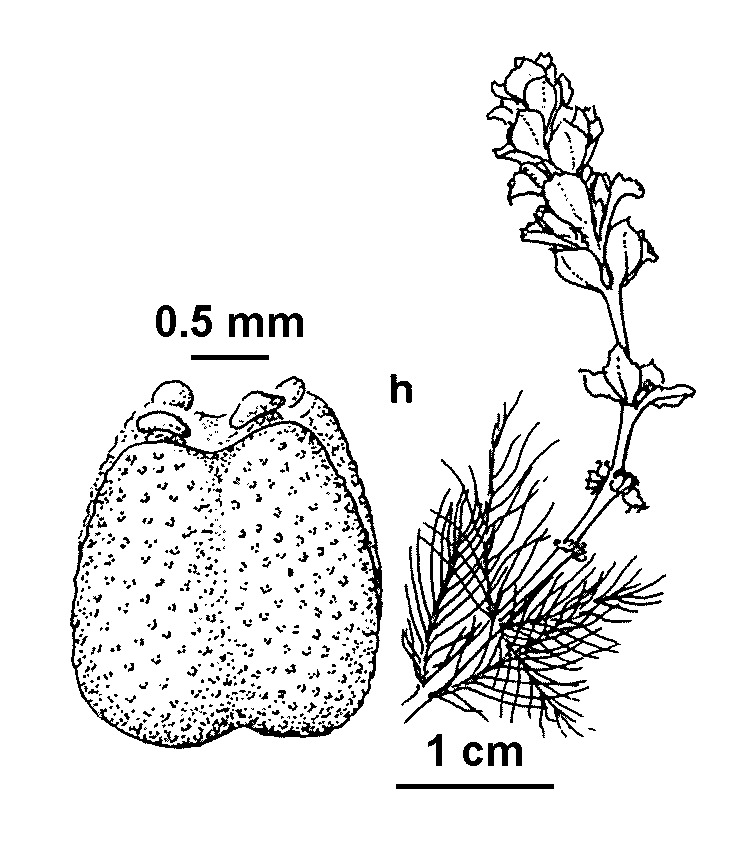Myriophyllum salsugineum
Orchard Lake Water-milfoilPerennial aquatic herb; stems 0.3–2 m long, mostly 1.5–2 mm diam., rooting mainly at the base. Leaves dimorphic, in whorls of 4 or 5; submerged leaves ovate, mostly 12–25 mm long, pectinate, with 10–18 pinnae; emergent leaves ovate, mostly 4–8 mm long, margins entire or minutely dentate. Bracteoles oblong, 1–2 mm long, green to purple; flowers solitary, sessile. Male flowers: sepals 4, triangular, c. 0.3 mm long; petals 4, 2.6–3.5 mm long, green to purple, caducous; stamens 8. Female flowers: sepals absent; petals vestigial; ovary 4-celled, styles conical, stigmas dark red, smooth to minutely papillose. Fruit globose, deep purplish-black; mericarps ovoid, 2–2.5 mm long, rounded, smooth to minutely papillose. Flowers Sep.–Jan.
MuM, Wim, GleP, Brid, VVP, VRiv, GipP, OtP, WaP, Gold, CVU, EGL, WPro, HSF, OtR. Also WA, SA, NSW, Tas. Widespread in western Victoria but more sporadic in the east. Grows in lakes and slow-flowing watercourses.
This is a distinctive species, recognizable even when sterile from most of its coexisting Myriophyllum species by its size and by its large, dark green, sessile, pectinate, submerged leaves (Orchard 1985).
Jeanes, J.A. (1996). Haloragaceae. In: Walsh, N.G.; Entwisle, T.J., Flora of Victoria Vol. 3, Dicotyledons Winteraceae to Myrtaceae, pp. 887–908. Inkata Press, Melbourne.
 Spinning
SpinningOrchard, A.E. (1985). Myriophyllum (Haloragaceae) in Australasia. II. The Australian Species. Brunonia 8: 173–291.




